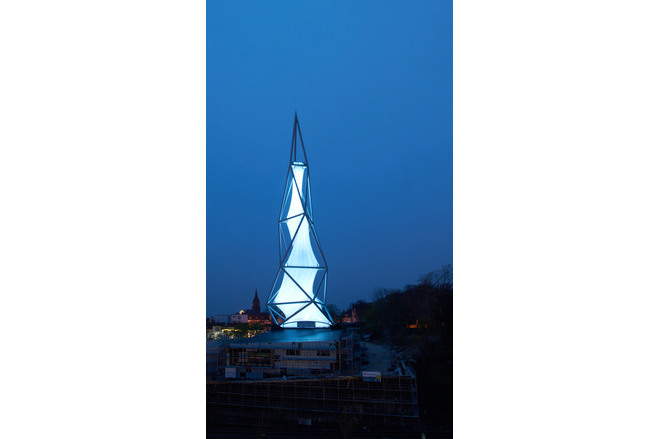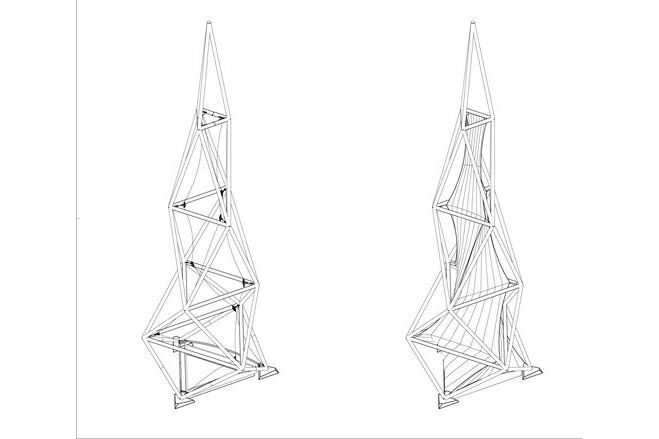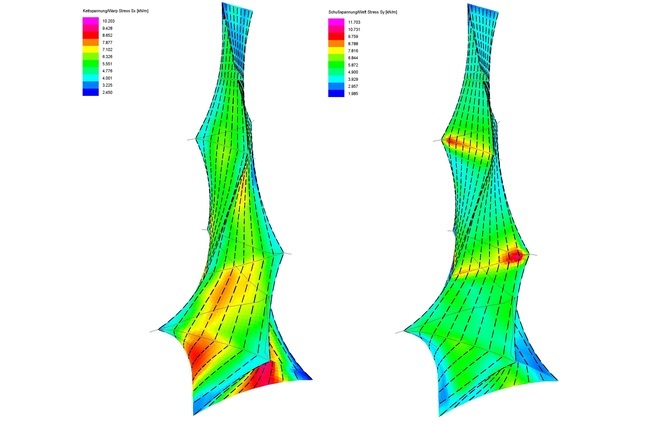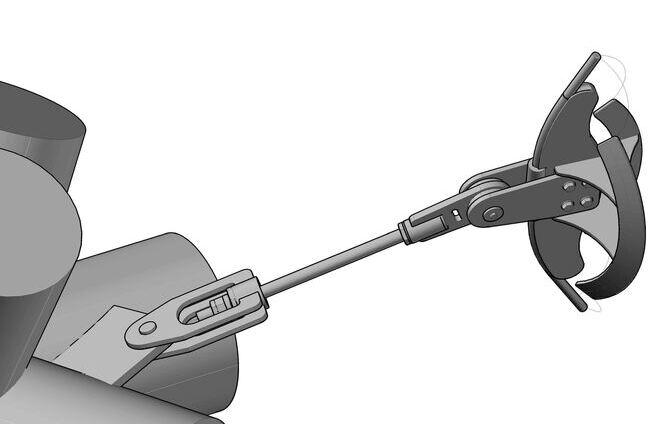PHÄNOMENTA Science Centre
General information
-
Location address
Lüdenscheid
-
Location country
Germany
-
Year of construction
2015
-
Name of the client/building owner
Stiftung PHÄNOMENTA Lüdenscheid
-
Function of building
Museums
-
Degree of enclosure
Hybrid structure
-
Climatic zone
Temperate - cold winters and mild summers
-
Number of layers
mono-layer
-
Type of application of the membrane
covering
-
Primary function of the tensile structure
- Space defining elements
Description
The tower is just one part of the expansion to PHÄNOMENTA: a two-storey extension offers an additional 1.400m2 of exhibition space, with zones characterised by expressive shapes. On the one hand, this ensures the functionality of the exhibition space and, on the other hand, is a result of the requirements on the tower's geometry. Since the concrete building with monolithic design also serves as a foundation for the steel structure, the frame is continued by diagonal supports in the concrete structure. The clear optics of the tower is based on triangular bays made of circular pipes that are welded airtight. A demanding three dimensional analysis is required, especially for nodes where up to six pipes are joined with various angles. Membrane stress due to pretension and wind are guided directly into the nodes, which minimises bending in the structure. In order to install the tower in individual segments, revisable bolted connections were arranged in the steel tubes, covered with special semi-cylindrical metal sheets. This allowed to avoid site welding and gives still a homogeneous appearance.
The membrane helix inside the steel structure has a light and filigree appearance - "a structure that is almost nothing at all," - and yet it is still quite impressive visually. The helix consists of just three components: 990m² of membranes, three form defining cables and nine link elements including accessories. These few elements are sufficient to allow the membrane to follow the rotating and tapered tower. While the maximum enveloped geometry grants to be collision free from the structure, the minimum enveloped geometry prevents from contact with the inner pendulum structure.
The helical curve has a particularly striking effect at night, when the seams of the back-lit covering and the shadow of the ropes converge upwards in a cone shape, giving the tower an even taller appearance. Light management of the LEDs is part of the technical building equipment.
The Foucault pendulum suspended from the inner secondary structure not only demonstrates to visitors the rotation of the Earth, it also visualises the time passing. In the space below is the Phänorama: a 360º projection of Lüdenscheid and its surrounding area, controlled by the natural period of the 30m long pendulum like a huge kaleidoscope.
Description of the environmental conditions
Material of the cover
-
Cable-net/Fabric/Hybrid/Foil
Fabric
-
Type (code)
Ferrari Precontraint 1202 S2
Main dimensions and form
-
Covered surface (m2)
990
Duration of use
-
Temporary or permanent structure
Permanent
Involved companies
-
Architects
KKW ARCHITEKTEN
-
Engineers
form TL ingenieure für tragwerk und leichtbau gmbh
WERNER Bauingenieure
-
Contractors
A.Arnegger GmbH
K.TA
Wolfgang Mühlherr
-
Suppliers
SERGE FERRARI
-
Other companies
Membranbau Pastors
Editor
-
Editor
Evi Corne





